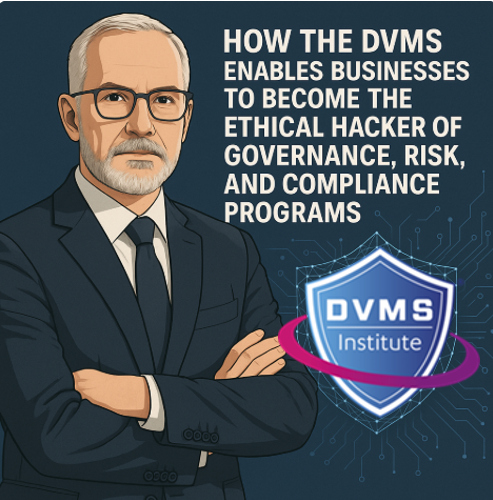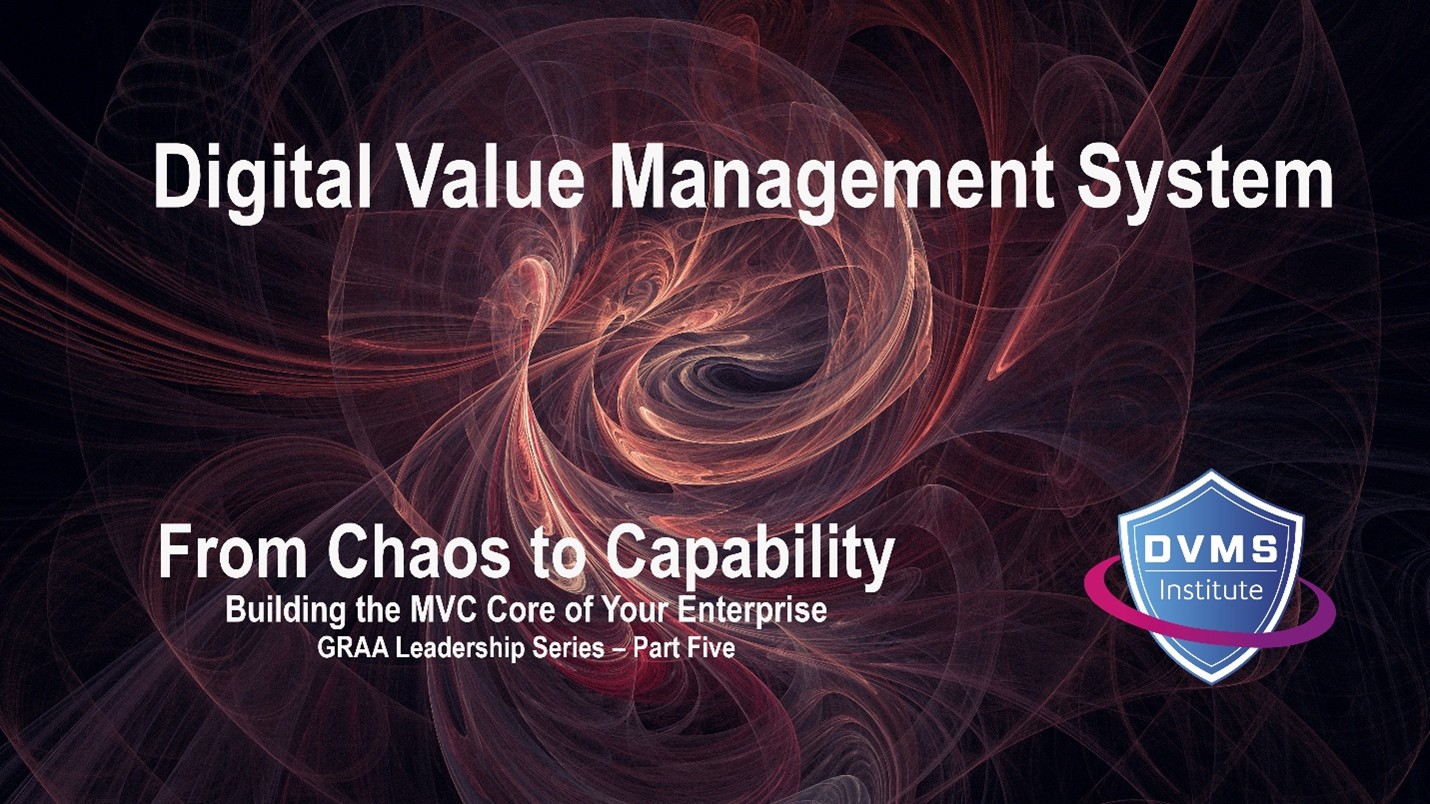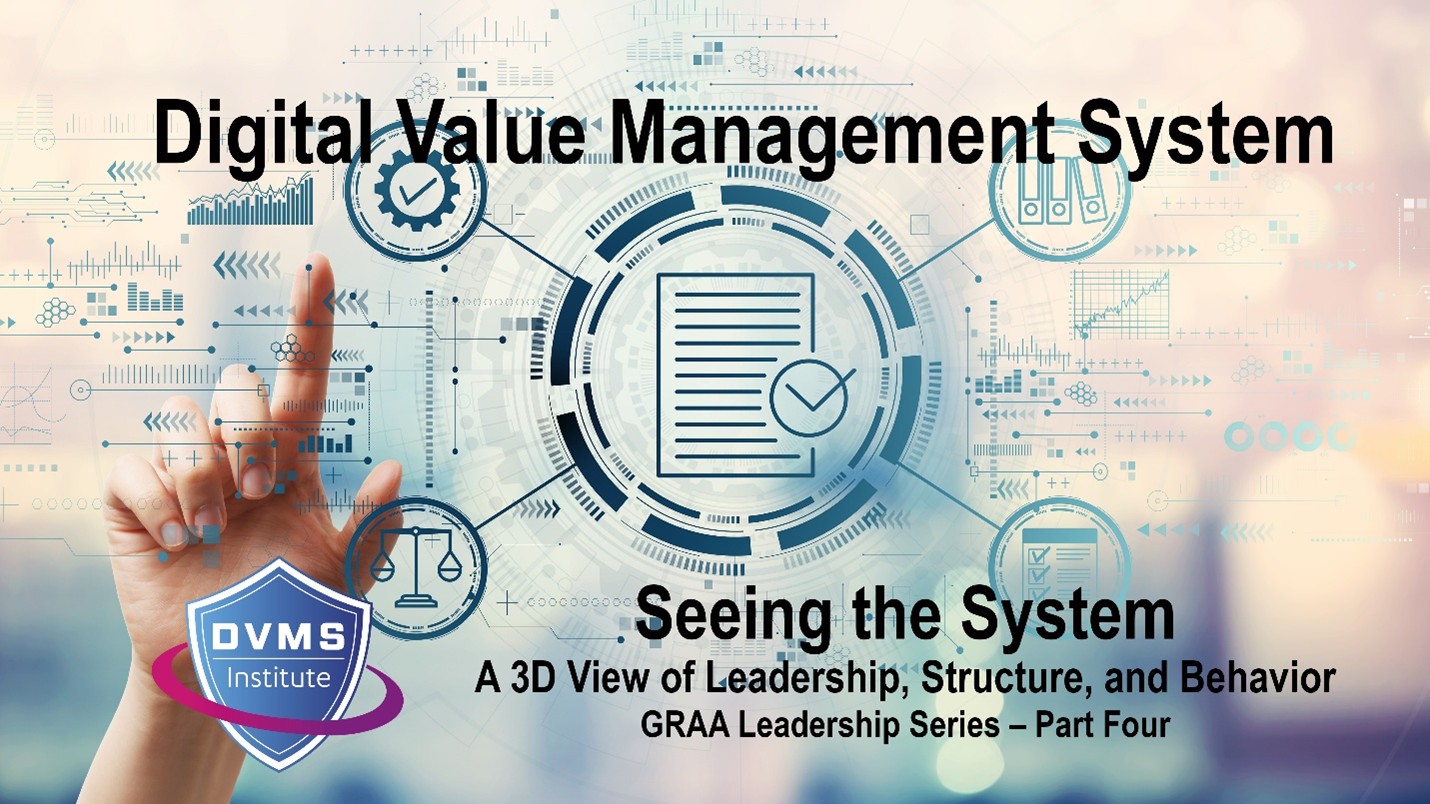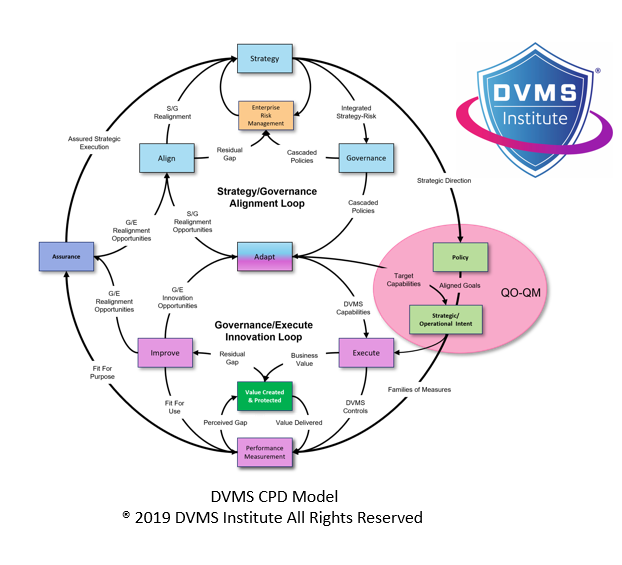How the DVMS Enables Businesses to Become the Ethical Hacker of Governance, Risk, and Compliance Programs
Rick Lemieux – Co-Founder and Chief Product Officer of the DVMS Institute
Rethinking Cybersecurity: From Compliance to Strategic Resilience
The concept of “Ethical Hacking” traditionally evokes images of penetration testers identifying vulnerabilities in technical systems. However, this notion has evolved as the digital landscape becomes more interconnected and complex. The Digital Value Management System® (DVMS) proposes a bold expansion: transforming organizations into the ethical hackers of their Governance, Risk, and Compliance (GRC) programs. Through systems thinking, adaptive leadership, and cultural transformation, DVMS enables businesses to proactively interrogate and strengthen their internal structures—not just their firewalls—achieving governance maturity and cyber resilience from within.
The DVMS as a Strategic Overlay for Ethical GRC Hacking
Unlike traditional frameworks or methods, the DVMS is an overlay, not a prescriptive tool, but an adaptive lens through which organizations can see and improve themselves. It maps onto what an organization already does and reveals performance gaps through its seven minimum viable capabilities (Govern, Assure, Plan, Design, Change, Execute, Innovate). This systemic view allows organizations to approach their governance structures with the same curiosity and rigor that ethical hackers apply to software: probing for misalignments, questioning outdated assumptions, and anticipating breakdowns before they occur.
The overlay allows organizations to question the effectiveness of their governance frameworks, the transparency of their assurance practices, and the’ real-world resilience of their plans. For example, through the DVMS “Govern” capability, a company can inspect whether its cybersecurity policies are lived behaviors or just documents on a shelf. This reflective auditing is analogous to ethical hacking, but the target is the cultural and procedural integrity of the organization itself.
Strategy-Risk Thinking: A New Paradigm
Central to DVMS is the concept of strategy-risk, which recognizes that strategy and risk are two sides of the same coin. Ethical hackers in the digital world seek to exploit the disconnect between intended function and actual behavior. The DVMS teaches organizations to ethically “hack” their strategy by constantly testing whether risk considerations are truly embedded in every objective. This integrated mindset drives organizations to question: Are our strategic goals aligned with our risk appetite? Are there latent cultural or procedural blind spots we’re not addressing?
This interrogation is practical with tools like the DVMS CPD (Create, Protect, Deliver) and 3D Knowledge Models. These models challenge organizations to continuously examine their value systems and prioritize security and governance as intrinsic parts of value creation, not afterthoughts.
Becoming the Menace Within: A Proactive Posture
A core tenet of the DVMS is the shift from reactive compliance to proactive resilience. The framework promotes the idea of “being the menace within,” encouraging organizations to adopt the mindset of a threat actor to expose and address systemic weaknesses before they are exploited externally. This doesn’t mean simulating attacks alone. It means cultivating a culture that encourages critical questioning, red teaming of governance structures, and a relentless focus on continuous improvement.
For example, organizations are taught to ask better questions through structured models like Goal-Question-Metric (GQM) and Question-Outcome-Question Metric (QO-QM) frameworks. These tools allow teams to audit their own governance, compliance, and risk systems by asking: What are we trying to achieve? How do we know we’re achieving it? Are we sure?
The Cultural Web and Psychological Hacking
Effective ethical hacking in GRC requires more than tools and templates—it demands cultural transformation. The DVMS framework emphasizes culture as a central pillar of resilience. Organizations must interrogate their “cultural web”: the paradigms, rituals, power structures, and symbols that define behavior. This is akin to psychological hacking—uncovering subconscious biases or outdated beliefs that may lead to blind compliance rather than proper governance.
When leaders use the DVMS to model transparency, promote psychological safety, and encourage cross-team collaboration, they unlock every employee’s ethical hacker mindset. Security becomes everyone’s job, and compliance is no longer a checkbox but a manifestation of lived organizational values.
DVMS in Practice: Adaptive Innovation and Learning
The DVMS approach is intensely iterative. Organizations are encouraged to adopt the DVMS FastTrack™ method, moving through phases from “Initiate” to “Innovate” in an agile, incremental fashion. This agile adoption mirrors the ethical hacker’s cycle of test-learn-adjust. It reflects the belief that perfection is less valuable than progress, and that continuous innovation—not rigid control—is the hallmark of effective GRC.
The DVMS doesn’t stop at internal controls. It integrates external threat modeling, regulatory analysis, and stakeholder expectations into its adaptive governance structure. Businesses are not only prepared to meet compliance standards—they’re prepared to evolve them.
Conclusion: From Compliance to Cyber-Consciousness
The Digital Value Management System enables organizations to become the ethical hacker of their own GRC programs by reframing governance, risk, and compliance as living systems—dynamic, complex, and always improvable. Through systems thinking, cultural awareness, and strategy-risk integration, DVMS transforms organizations into cyber-conscious entities that see vulnerabilities as opportunities for learning and resilience.
By hacking themselves ethically, relentlessly, and with purpose, organizations using the DVMS don’t just manage digital risk—they master it. They don’t merely comply—they lead.
About the Author

Rick Lemieux
Co-Founder and Chief Product Officer of the DVMS Institute
Rick has 40+ years of passion and experience creating solutions to give organizations a competitive edge in their service markets. In 2015, Rick was identified as one of the top five IT Entrepreneurs in the State of Rhode Island by the TECH 10 awards for developing innovative training and mentoring solutions for boards, senior executives, and operational stakeholders.
In today’s digitally driven economy, cyber disruptions are no longer an “if” but a “when.”
The DVMS Institute’s Certified Training Programs teach organizations the skills to build a Holistic and Culture-Aligned Overlay System capable of coordinating Adaptive, Governance, Resilience, and Assurance actions across a Complex Digital Ecosystem.
Achieving true cyber resilience across a complex digital ecosystem requires seamless alignment between organizational Strategy, Governance, and Operations, underpinned by a culture dedicated to sustaining and continuously innovating organizational digital value.
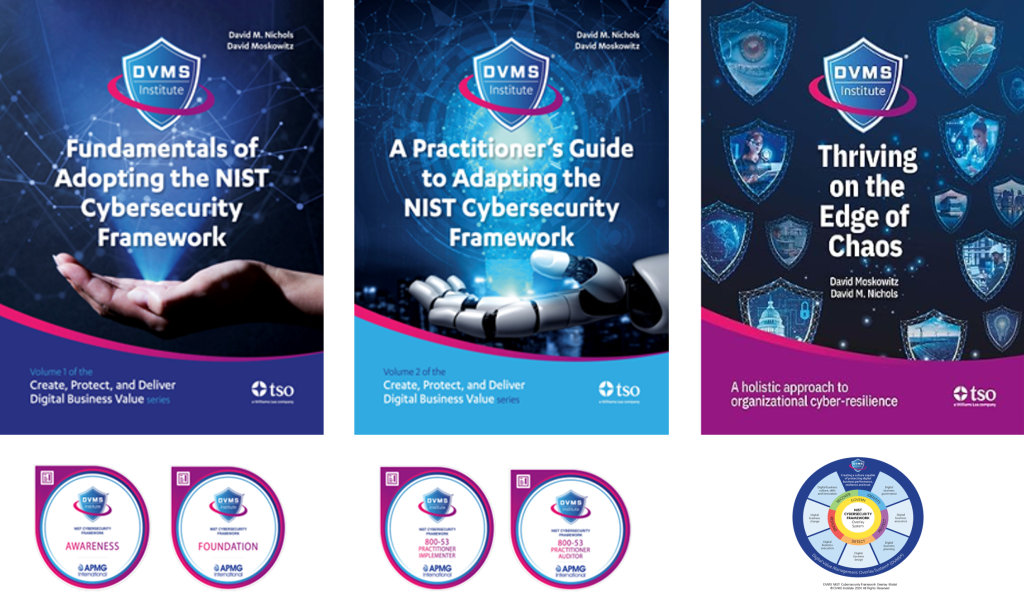
The DVMS positions cyber resilience as a strategic, enterprise-wide capability powered by the Institute’s CPD, Z-X, and 3D Knowledge models.
This systems-based approach to cyber operational resilience demands active engagement from all members of the Digital Ecosystem, with each member playing a distinct role in proactively identifying and mitigating the systemic risks that threaten digital business operations.
This adaptive, forward-looking approach to Governance, Resilience, and Assurance (GRA) positions businesses to:
- Maintain Operational Stability Amidst Constant Digital Disruption
- Drive Agility and Trust Across Your Digital Ecosystem
- Satisfy Critical Regulatory and Certification Requirements
- Leverage Cyber Resilience as a Competitive Advantage
DVMS Explainer Videos
- Architecture Video: David Moskowitz explains the DVMS System
- Case Study Video: Dr. Joseph Baugh Shares His DVMS Story.
- Overlay Model – What is an Overlay Model
- ZX Model – The MVC’s that power operational resilience
- CPD Model – Adaptable governance and assurance
- 3D Knowledge Model – Enabling holistic organizational learning
- FastTrack Model – A phased approach to cyber resilience
Digital Value Management System® is a registered trademark of the DVMS Institute LLC.
® DVMS Institute 2025 All Rights Reserved

